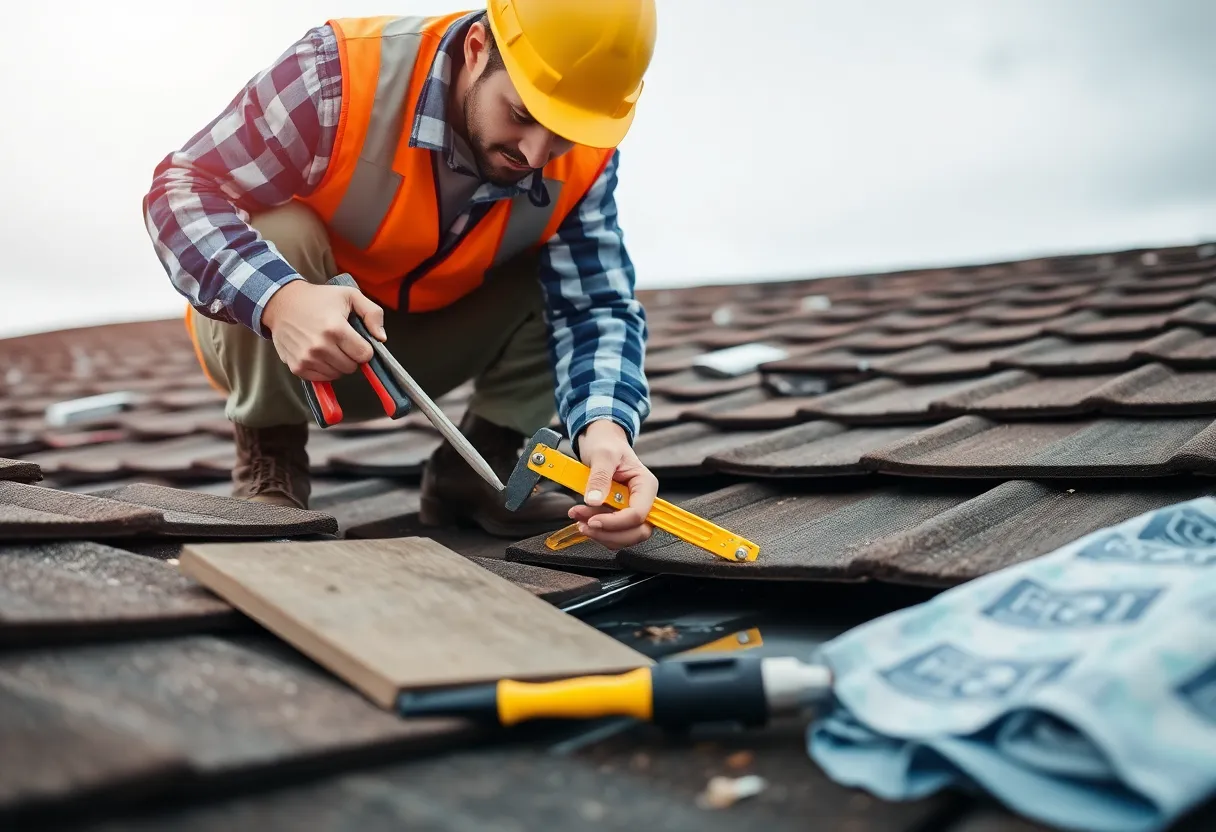How Can You Effectively Diagnose and Repair Roof Leaks Like a Pro?
Roof leaks can lead to significant damage if not addressed promptly. Understanding how to diagnose and repair these leaks is essential for maintaining the integrity of your home. This article will provide you with actionable insights on how to identify and remedy roof leaks effectively.
Understanding the Causes of Roof Leaks
Before diving into the diagnosis and repair process, it’s crucial to understand the common causes of roof leaks. These include:
- Old roofing materials: Wear and tear over time can lead to leaks.
- Poor installation: Improperly installed roofing can compromise its integrity.
- Weather damage: Harsh weather conditions can cause shingles to lift or crack.
- Flashing issues: Damaged or improperly installed flashing can lead to water infiltration.
- Clogged gutters: Overflowing gutters can cause water to back up under shingles.
Diagnosing Roof Leaks
Initial Inspection
The first step in diagnosing a roof leak is to conduct a thorough visual inspection. Look for the following:
- Stains on ceilings or walls: Water stains can indicate a leak.
- Damaged or missing shingles: These could be potential entry points for water.
- Ponding water: Areas where water accumulates can suggest inadequate drainage.
Locate the Source
Locating the exact source of the leak can be challenging. Here are some methods to help pinpoint the problem:
- Check the attic: Inspect the underside of the roof for moisture or mold.
- Water test: Use a hose to simulate rain. Start at the bottom and work your way up, checking for leaks as you go.
Common Leak Locations
There are several common locations where roof leaks often occur:
- Joints and seams: Pay special attention to high-traffic areas like chimneys and vents.
- Roof penetrations: Check around pipes and skylights for signs of leakage.
- Valleys: Ensure that water is flowing correctly through roof valleys.
Repairing Roof Leaks
Preparation and Safety
Before making repairs, ensure you have the right materials and safety gear:
- Materials needed: Roofing cement, shingles, flashing, caulk, and other tools based on the specific repair.
- Personal safety gear: Use gloves, goggles, and a sturdy ladder to prevent accidents.
Basic Repair Techniques
Here are some standard techniques for repairing different types of leaks:
- Replacing damaged shingles: Remove the broken shingles and replace them with new ones, securing them properly.
- Sealing cracks: Use roofing cement to fill small cracks or gaps around flashing or shingles.
- Fixing flashing issues: Realign or replace damaged flashing to ensure a watertight seal.
Utilizing Professional Help
Sometimes, DIY repairs may not be sufficient. In such cases, it’s advisable to seek professional assistance. Here are some signs that indicate the need for professional help:
- Extensive damage: If the damage is widespread, a professional will ensure a comprehensive repair.
- Complex roofing systems: Roofs with intricate designs may require specialized skills.
- Safety concerns: Avoid risking injury, especially when working at heights.
Preventative Measures
To reduce the likelihood of future leaks, consider the following preventative measures:
- Regular inspections: Conduct routine inspections to catch issues early.
- Gutter maintenance: Regularly clean gutters to prevent water overflow.
- Invest in quality materials: Use high-quality roofing materials for better durability.
Seasonal Maintenance Tips
Seasonal changes can significantly impact your roof’s integrity. Here are specific tips for different seasons:
- Spring: Inspect for winter damage and clear debris.
- Summer: Check for heat-related wear and tear.
- Fall: Clean gutters and prepare for winter weather.
- Winter: Monitor for ice dams and icicles.
Conclusion
Diagnosing and repairing roof leaks is a vital skill for homeowners. If you understand the causes, recognize the signs, and follow proper repair techniques, you can protect your home effectively. Never underestimate the importance of regular maintenance and timely repairs. When in doubt, don’t hesitate to consult a professional.





 Mays Contracting
Mays Contracting


